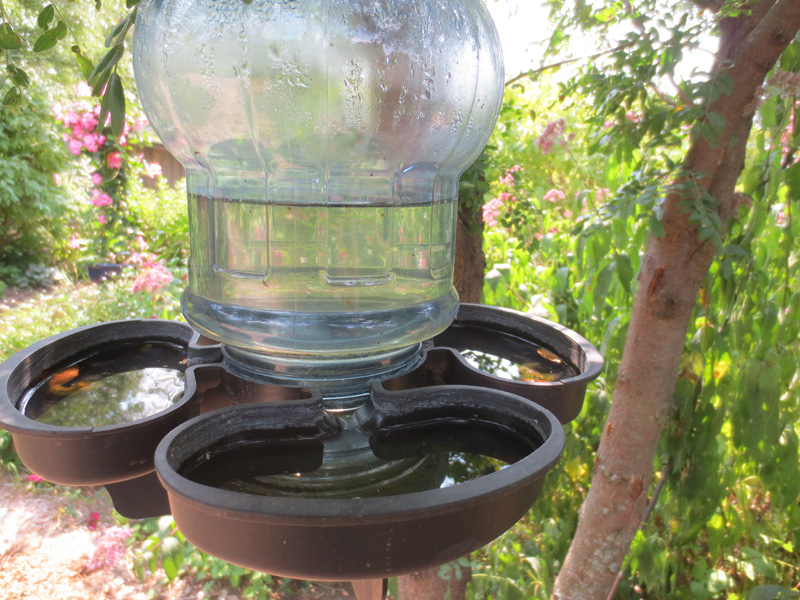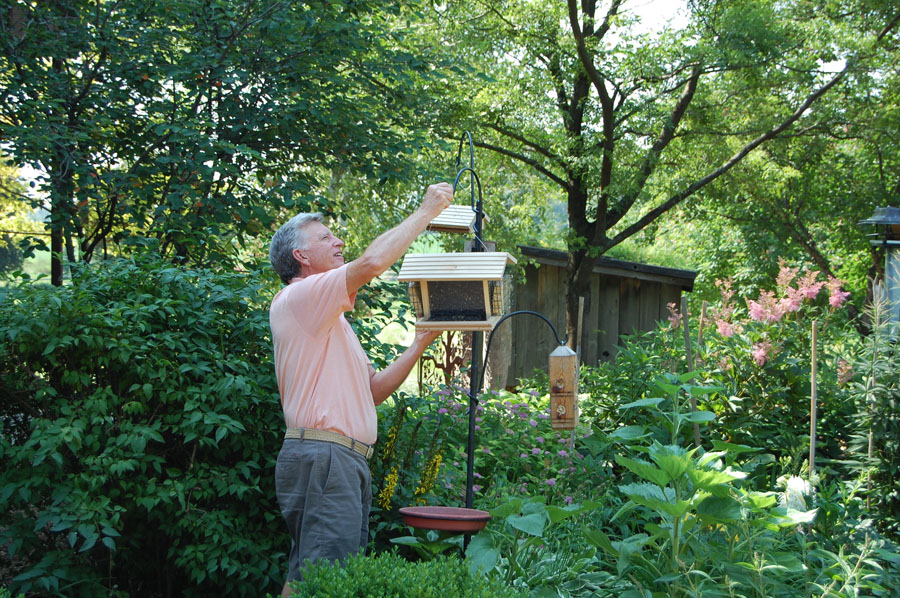For the Birds
It was 3 years ago when I received a call from my friend David Love, the president of Bird Studies Canada, asking me if I would be interested in meeting some of their people and hosting a ‘bird-a-thon’ in Toronto.
The meeting was very impactful indeed and as a result I have learned so much about backyard birding that I almost feel like an expert. Well, not really. Fact is, I now know people like Jody Allair, a resident BSC biologist and science educator, who has forgotten more than I will ever learn about wild birds. And believe me, Jody does not forget much.
Here are some highlights of what I have learned:
1. Birds do not need us to feed them. Many well intentioned feeders of birds (vs. ‘bird feeders’) believe that wild birds become dependant on us for food. Other than, perhaps, the coldest days of the year and the ones with the deepest snow fall, birds are very capable of finding food from natural sources. They are much like us in that they will take the easiest path to a meal and if it happens to be at your feeder that is where they will congregate. The good news is that you are free to go on vacation and not keep the bird feeders full, without feeling guilty.
2. Use the appropriate seed. Birds are foragers: they find food in some of the most unlikely places, like the seed heads of ornamental grasses in your yard. Consider what kinds of birds you wish to attract to your yard and put out the appropriate seed in your feeders. Here is a short list from Bird Studies Canada:
a. Black oil sunflower/premium mixed seed attracts Cardinal, black-capped Chickadee, Mourning Dove, Dark-eyed Junco, song sparrow and common Grackle (I have learned that EVERY bird in the kingdom has a beneficial role to play in the scheme of things, grackles inclusive).
b. Suet and bird peanuts (vs peanuts for human consumption, which is a no-no as birds should not have salt –something else that I learned) attract Blue jay, red-breasted nuthatch, Downy Woodpecker, White-breasted Nuthatch, Hairy Woodpecker.
c. Nyjer/Black oil sunflower seed attracts house finch, American Goldfinch, Purple Finch, Common Redpoll, Pine Siskin. Use a nyjer feeder and watch the bird population scrap over who gets the spoils first. Entertaining, granted, in a passive way. This is not like the latest movie release of Star-Wars.
d. Fruit attracts the American Robin. Note that much of the fruit on your crabapples and Mountain ash trees will be foraged by robins who decide that it is a good idea to stay here over winter. They usually strip a fruit bearing tree clean after the first heavy snow fall.
3. Plants. There are so many plants that birds love that I can’t list them all here. Truth is, the seeds of their favourite plants are what they are really interested in. Broadly speaking the following plants are bell ringers for attracting birds: ornamental grasses, Joe Pye weed, Echinacea, cedars and rudbeckia. And when you are shopping at your favourite garden retailer this coming spring be sure to look for plant labels that state ‘Attracts birds’.
4. Water. This is the single most impactful feature that you can add to your yard in your effort to attract birds (apart from a full bird feeder). Birds need water to drink and bathe. Simple as that. Once again, they have a few things in common with people. A half barrel or a full blown pond and stream works wonders. I have 5 bird ‘baths’ in my yard at last count. They use them all.

5. Shelter. Birds need shelter to breed and for protection from cold, wind, snow and their enemies like hawks, falcons and neighbourhood cats. Especially cats. The best protection that you can provide wild birds is evergreens that grow tall and thick. Cedars, spruce, fir and like all work like a charm. Keep in mind that bird feeders should be located within a meter of a window or more than 10 meters from a window. Within a meter birds cannot build up enough speed to hurt themselves too seriously if they hit the window and more than 10 meters away provides them an opportunity to veer away from the window when they realise that it is not a thoroughfare to another part of your garden.
Bird Studies Canada is the largest and most sophisticated organisation of its kind. There are over 20 full time employees, including several well educated and enthusiastic ornithologists who study birds very carefully. Each year these specialists depend on the public – people like you and me – to help them determine the migration patterns of all wild bird species and population growth and decline.
You can become a ‘citizen scientist’ by taking part in the largest bird count in the country in December. The Christmas Bird Count is conducted between Dec. 14 and Jan. 5th inclusive. All you have to do is log on to www.birdscanada.org to learn more and register. It is fun, educational and who knows, you could become hooked and skip the trip south this winter in favour of bird watching.





